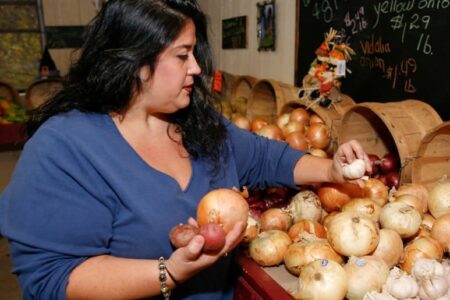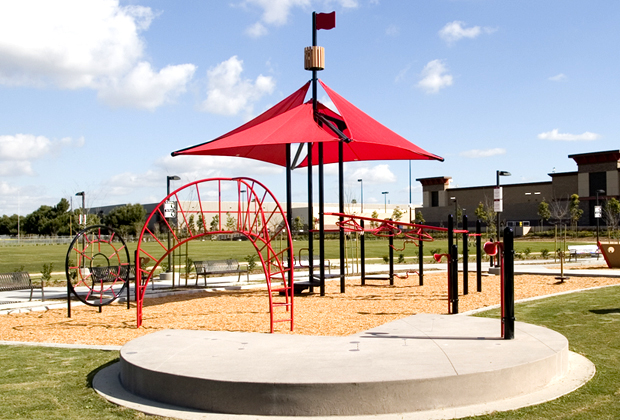
Share On Social!
Promotores working with the Chula Vista Community Collaborative (CVCC) participated in an asset mapping project in Chula Vista, Calif., in 2000.
As part of a $5,000 grant for an adopt-a-block project—a joint effort of the San Diego County’s Substance Abuse Summit VI and the CVCC—promotores spoke with local residents to learn about the neighborhood’s assets, health, and safety concerns. It was then that they discovered a lack of active space in the community, and that residents wanted a park.
Eventually, the promotores teamed up with community agencies, gathered information, and presented their case to the Chula Vista City Council. After receiving city approval, they gave input for the park’s design and watched construction of Harborside Park— the first park in that area of the city, in more than two decades.
The Issue of Space for Physical Activity
Awareness: Barbara Lugo, a local promotora, was originally a volunteer with one of the CVCC’s, Family Resource Centers (FRC). She joined a group of about five dedicated FRC volunteers who discussed ways to promote more community involvement.
Heather Nemour, a coordinator at the CVCC who helped organize and train the promotores said, “there was a lack of neighborhood groups and the volunteers wanted to be a part of something.”
So with the help of Nemour and Dana Richardson of the South Bay Partnership and Community Health Improvement Partners (CHIP), the volunteers were trained on how to conduct surveys to identify the community’s assets and to better understand the neighborhood’s health and safety issues.
In no time the group had grown to more than 15 members. The promotores named themselves the Neighborhood Council Initiative (NCI) and appointed leaders for the group. At one point Barbara Lugo served as the NCI president.
According to Nemour, the NCI spent about three months going door-to-door to survey residents within a three block radius of what is considered the Westside of Chula Vista.
Learn: “Children in the area lived mostly in apartment buildings, condominiums, and in low-income housing units,” said Margarita Holguin, Director of the CVCC. “So they really didn’t have anywhere to play.”
With high childhood obesity rates (36%) in Chula Vista, a city with a 58% Latino population, the lack of spaces for physical activity was especially disconcerting news for the promotores.
The city’s Eastside, for example, had parks to spare.
Yet, the promotores found that on the Westside a new park hadn’t been built in at least 25 years.
There were many reasons why park space was limited.
“[We learned that] families said they didn’t feel safe going to parks, and the closest park was not really close to them,” said Lugo.
Old train tracks were also identified as a barrier for getting families to the nearest park.
Frame Issue: After assessing the neighborhood the NCI found that there were several concerns among residents including: an abundance of neighborhood gangs, vagrants in the area, drug/alcohol abuse, and the lack of a safe park. All of these were barriers which kept parents and children indoors.
Although there were several concerns in the community, the promotores learned that residents living in the neighborhood also had several talents. Some people volunteered to teach guitar lessons and others sewing classes.
“They wanted to know their neighbors and they wanted to be able to offer what they could to the community,” Nemour said.
This is when the promotores realized that residents needed a place of their own. Many of the neighborhood’s problems seemed to stem from a lack of support. They didn’t have a central place where they could gather to talk to one another, or a place to take their children outside to play.
The promotores realized that a safe park could be the solution to many of the community’s problems.
Developing Spaces for Physical Activity
Education: After learning of the needs in the community, the promotores felt empowered to bring change.
However, they believed they needed additional skills before taking their case to city officials.
“We felt that we needed more training because we were the ones who had to go [push] for what we wanted, and not the agencies [of the CVCC],” Lugo said. “It’s more powerful when we as citizens go.”
According to Lugo, they soon applied for and received a small grant from the San Diego Foundation for Change to participate in training.
City and county officials also met with the group to speak and share their voice.
Through this process, the promotores learned that their voice could make a difference, and if they worked together they could help bring lasting changes to Western Chula Vista.
Mobilization: The NCI next sought the input and expertise of community organizations to get the ball rolling for a local park.
So they decided to present their findings at one of the monthly meetings of the larger Chula Vista Community Collaborative—where more than 100 community organizations gather to discuss ways to improve the “quality of life” for residents in the area. These meetings provided an opportunity for promotores to gauge the potential support from the community for a new park.
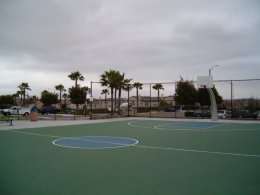
The San Diego County Department of Health and Human Services (DHHS), for example, helped the promotores by identifying an empty lot adjacent to its office building. The lot was privately owned and appeared as an ideal location for a park.
At this point, Lugo said the promotores decided to contact the mayor’s office to schedule a meeting.
“We had about two meetings with the mayor and he told us about what we would have to do to get a park for our community,” Lugo said. “Part of the process was to present before the City Council so that everyone would have the opportunity to decide if it was something that would benefit Chula Vista.”
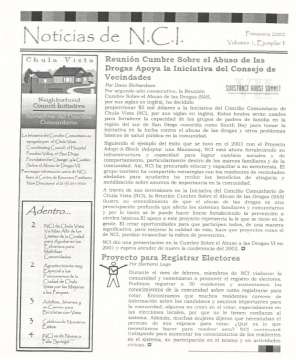
Although it took a few months before they could meet with the mayor, the promotores did not get discouraged. Instead, they continued to strengthen their case by finding more reasons to support the need for a park.
Debate: After speaking with the mayor, the promotores finally presented their case to the City Council.
Some promotores did not speak very much English—but this did not limit them from attending the meeting and standing up for the community’s right to a park. In fact, a translator was provided by the City so that all the promotores could be heard.
Unexpectedly, the promotores faced opposition from another group of parents who wanted to build a baseball field on the same lot of the proposed park.
The City Council listened as supporters from both groups made their case and then decided to take some time to weight the options.
Enacting Spaces for Physical Activity
Activation: News about the proposed park started to spread.
Community organizations, who had heard about the promotores’ efforts to get a park, began telling other groups.
“Because we were getting media attention, I also think that this is why the city decided to support this idea,” Lugo said.
The promotores also presented their findings at a local conference where Lugo believes that city officials were present—which may have helped introduce the community’s desire for a new park.
“The role of the promotores was really to [speak up] for the families” and help spread the word, Holguin said.
The promotores also developed a newsletter in Spanish, with updates from the NCI.
Frame: By the time the promotores presented their case to city leaders, they had already investigated who owned the land and how much the land would cost the city.
The empty lot for the proposed site of the park was ideal because of its location—close to Harborside Elementary School, the San Diego Department of Health and Human Services building, and trolley tracks—making it a convenient location for the neighborhood’s children.
This was another point that the promotores used to help convince city officials that the abandoned lot should be transformed into a park.
Change: Ultimately, the City Council decided on building a park for the community in spring 2005.
City planners conducted at least two public meetings so that the community could provide input on what they wanted to see in the new park.
“Parents and the community wanted a park with more than just athletic fields,” said Mayor Stephen C. Padilla, according to the Chula Vista Parks and Recreation Department.
Without the promotores’ dedication to the community, Harborside Park might not exist, Holguin said.
“The city really recognized our promotores as being the lead, being the conduit…to get everyone to the table to begin to talk,” she said.
Sustaining Spaces for Physical Activity
Implementation: Construction of the park began soon after the ground breaking ceremony, and the promotores were certainly a part of the event. Even a park bench was dedicated to the former the director of the CVCC.
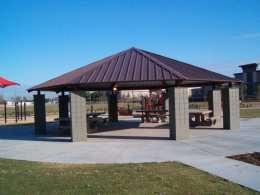
The park opened to residents on April 29, 2006. Children and residents began using the park’s amenities—a playground, skate park, basketball court, pavilion, and an athletic field.
Since the opening of Harborside, the promotores have continued to identify needs that exist at other parks, like better lighting and more water fountains.
They also continue to use the skills they acquired through the CVCC to share the lessons they have learned with others.
“The promotores presented at several conferences and also visited with other communities to present on how this project was done for replication,” Nemour said.
They are reminded that they are the ones connecting the community to services and agencies.
Holguin said the promotores are often asked, “How are you going to share this with the community?”
Sustainability: Although residents living on the Westside of Chula Vista now have a park to enjoy, there is certainly a need to ensure that the park remains vibrant and accessible to the community.
“We want to make sure that it [the park] is available to any community member, and that people feel safe going there,” Holguin said.
This is why city officials, law enforcement, the CVCC, and the Health & Human Service Department continue hold meetings to discuss how to keep Harborside Park safe. According to Holguin, the city’s parks department charges for use of the park kiosk, as a way to help pay for the park’s upkeep.
Programming at the park is also important and is one component that helps fuel the use of the park.
“People are always using the park,” Holguin said.
As this video demonstrates, day camps at Harborside Park have provided children with a place where they can learn about safety and participate in physical activity, and most importantly play.
Explore More:
Green & Active SpacesBy The Numbers
33
percent
of Latinos live within walking distance (<1 mile) of a park
This success story was produced by Salud America! with support from the Robert Wood Johnson Foundation.
The stories are intended for educational and informative purposes. References to specific policymakers, individuals, schools, policies, or companies have been included solely to advance these purposes and do not constitute an endorsement, sponsorship, or recommendation. Stories are based on and told by real community members and are the opinions and views of the individuals whose stories are told. Organization and activities described were not supported by Salud America! or the Robert Wood Johnson Foundation and do not necessarily represent the views of Salud America! or the Robert Wood Johnson Foundation.



